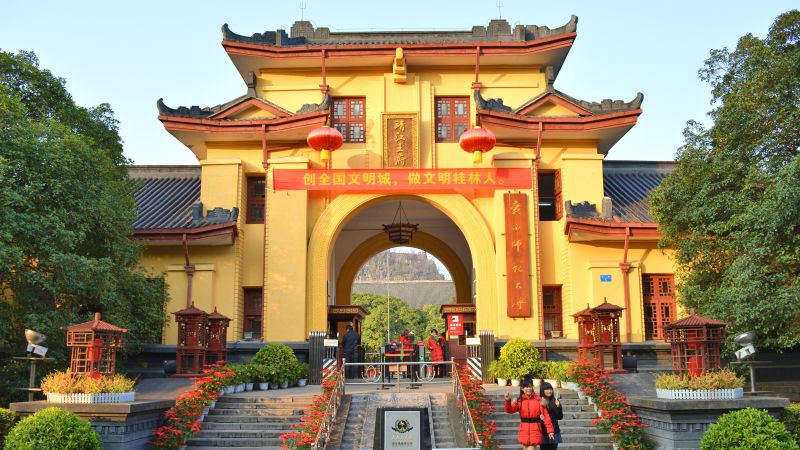Discover Jingjiang Princes’ City in Guilin
Guilin is one of China’s most picturesque cities, renowned for its striking karst mountain landscapes. A must-visit destination in Guilin is the historic Jingjiang Princes’ City, which offers a glimpse into China’s rich cultural heritage and history.
Historical Significance
Jingjiang Princes’ City has a storied past that dates back to the late 14th century, making it older than the Forbidden City in Beijing. The site was once the royal complex for the princes of Jingjiang, which played a vital role during the Ming Dynasty.
Key Attractions
- Chengyun Gate: As the main entrance to Jingjiang, it welcomes visitors into a world of history.
- Chengyun Palace: A former administrative center, this majestic building now serves as a museum showcasing the history of the complex and its 14 princes.
- Solitary Beauty Peak: Rising 216 meters high, this limestone outcrop provides breathtaking aerial views of the palace and the surrounding landscape.
- The Former Examination Hall: A unique attraction that allows visitors to experience a mock examination like the scholars of the past.
Visiting Jingjiang Princes’ City
Visitors can immerse themselves in the complex’s rich history while exploring various attractions such as traditional dance demonstrations and martial arts performances held on-site. Moreover, with over 306 steps leading to the top of Solitary Beauty Peak, the hike rewards climbers with mesmerizing vistas of the palace and its lush surroundings.
Conclusion
In summary, Jingjiang Princes’ City is not only an architectural marvel but also a symbol of cultural significance. A visit to this site enriches your understanding of ancient Chinese history and offers a unique opportunity to appreciate the natural beauty of Guilin.















